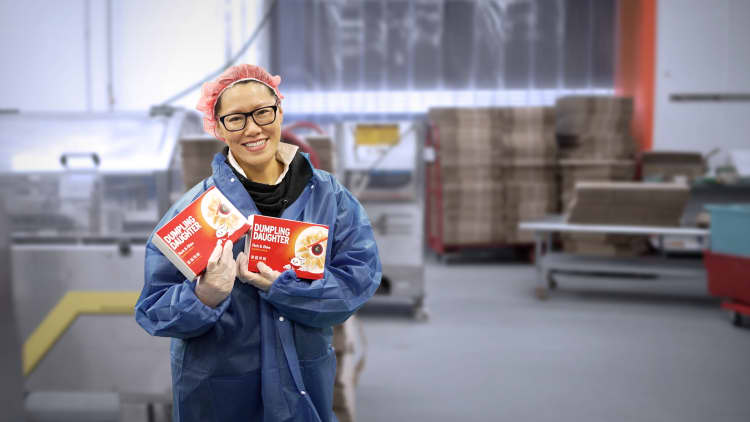Children need some degree of self-confidence to grow up to be happy, thriving adults.
Confidence is a key indicator of future success, research has shown, because children and adults are more likely to be motivated self-starters when they have faith that their own skills and efforts can lead to positive outcomes.
Unfortunately, the best ways to boost kids’ self-confidence aren’t always obvious to their parents. This can especially be true for parents of young girls, who are more likely than boys to suffer from confidence issues.
One reason: young girls often face greater pressure than boys to achieve perfection — and are more likely to struggle with fears of failure that can sap their confidence as a result.
More than 3 out of 5 girls say they feel societal pressure to be perfect, and most blame specific language they hear directly from parents and other authority figures. That’s according to a recent survey of 61,500 parents and children between the ages of 5 and 12 commissioned by the LEGO Group toy company. Over half of the children surveyed in the LEGO Group study said they believe adults listen more to boys’ creative ideas than girls’.
Fostering creativity in your kids can go a long way in boosting their confidence by allowing them the freedom to take risks and try new ideas. That can help build another trait psychologists often link to future success: resilience.
“When children fear failing, it can hamper their willingness to explore and think outside the box. This impacts the key skill of creative confidence — which can carry into adulthood,” says Harvard-trained journalist and parenting researcher Jennifer Breheny Wallace.
Boosting your kids’ confidence and creativity can be as simple as rethinking word choices and even the way you praise your child, according to Wallace. Here are four of her tips for parents to ensure they’re raising highly confident girls.
Don’t harp on perfection; praise process instead
Parents can dial down the pressure young girls already experience, Wallace notes. “Lots of kids feel the need to be perfect because of society, culture, or their own thoughts,” she says. “But, by just changing how we talk, grown-ups can ease that tension.”
This is especially true when it comes to a creative project, where success can be subjective anyway. Try applauding certain elements — “I love the colors you picked!” — and always remember to praise the process over the results, Wallace adds.
Praising your child’s effort — how hard they worked on a project or the extra hours they spent studying for a test — sends the message that a perfect result isn’t the only thing that matters, according to child psychologist Francyne Zeltser. It can help your child stay motivated to keep working hard in the future, even if previous efforts yielded something flawed.
Celebrate setbacks by adopting a growth mindset
Teaching all children to view mistakes and setbacks as learning opportunities, rather than failures to be ashamed of, helps them maintain the confidence and motivation to keep experimenting in the future. Kids with the strength and confidence to take necessary risks are more likely to try and overcome the obstacles they’ll face and be more successful in the long run, according to psychologists like Michele Borba.
Wallace recommends being open with your kids by sharing examples of past mistakes you’ve made, and how you learned from them.
“Having a growth mindset means believing that you can get better at stuff by working hard and never giving up, instead of thinking you’re just born with certain skills,” she says. “When kids have this mindset, they’re more likely to bounce back from tough times, enjoy learning new things, and be up for trying out new stuff, even if it’s tricky.”
Be mindful of word choices
Wallace reminds parents to “watch out for gender stereotypes” in the words you choose to describe your child’s ideas, especially when it comes to young girls and creative projects.
“We all fall into this trap,” she says. “Language bias can reinforce stereotypes by associating certain qualities, behaviors, or career choices with a particular gender.”
It may seem innocuous to describe something your daughter painted as “pretty” or “cute.” But the LEGO Group survey found that words like those are far more likely to be used to describe the output of young girls, while words like “cool,” “bold,” or even “genius” are nearly twice as likely to be used to describe the work of boys and men.
Those types of gender stereotypes can steer young girls toward or away from specific interests early on, and can even affect gender diversity in creative and STEM-related industries, according to the U.S. National Science Foundation.
Introduce inspiring role models
Parents can encourage kids to openly discuss, and challenge, existing gender stereotypes, Wallace notes. When doing so, it can help to point to inspiring role models who can “spark their creativity and boost their confidence,” including notable women succeeding in typically male-dominated industries, from Academy Award-nominee Greta Gerwig to female tech CEOs.
Role models can be friends or family members, too, Wallace points out — anyone whose “accomplishments can serve as a powerful reminder that we are all capable of achieving great things.”
Model the type of behavior you want to see from your kids. That can mean playing with them while you have conversations that can boost their creative confidence, like discussing what you like most about a game you’re playing or what inspired them to draw a certain picture.
“Kids pick up lessons best by watching what adults do,” Wallace says.
Want to make extra money outside of your day job? Sign up for CNBC’s new online course How to Earn Passive Income Online to learn about common passive income streams, tips to get started and real-life success stories. Register today and save 50% with discount code EARLYBIRD.
Plus, sign up for CNBC Make It’s newsletter to get tips and tricks for success at work, with money and in life.

Credit: Source link














